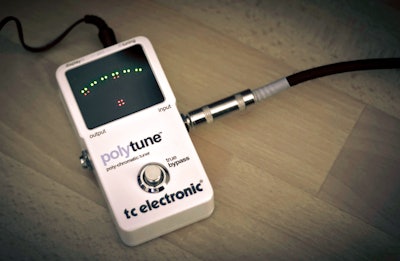
You might remember me sharing a bit more about stepping back into orchestra last year, getting my harp and myself ready to play in front of people again, and alongside many other musicians. Showing up to that first rehearsal gave me some lessons in leadership I didn’t expect.
If you’ve played in a band or orchestra before, you understand that the first thing we do before we play is tune. Tuning makes sure that when we start playing music together, we’re playing the same notes.
Some tools still work, but they aren’t the most effective
On that first day of rehearsal, I got to the orchestra room early to give myself what I thought would be ample time to tune (there’s 47 strings on that harp — it takes a bit!). My bag had my tuner in it, along with other goodies — surprisingly, business cards from 2003 to hand out at gigs! When I got the tuner out, though, it wasn’t picking up my harp strings because there were too many other sounds in the room. Ugh!
I noticed other musicians weren’t using the big bulky tuner that was a must-have when I played regularly before. It seemed weird to me that instead, they just pulled out their phones and were using an app.
It turns out, in the last 20 years, the tools I once used have changed. Not only is the app more powerful, but it also didn’t cause me any issues — and gave me one less thing to carry!
The whole experience of being back in an orchestra was a humbling one, and that first rehearsal was particularly so. That night on my way home, and in the days following, I started to think about what else might have changed or gotten easier in the last 20 years that I didn’t even know yet. It was like my music life was stuck in a time warp.
How effective are your coaching tools today?
This also led me to start thinking about the tools and methods leaders use to coach employees and team members. While the tools we teach and coach with today are effective and work, they likely look and feel different than what we used years ago. It feels strange and nerve-wracking to try out a new method or process today because it isn’t what we learned as employees ourselves.
One of the things we hear most frequently from leaders as they step into leadership development program or training sessions that we facilitate is “this feels awkward,” or “this doesn’t feel like me.”
The thing is, that’s OKAY! When we take the time to explore new methods for leading or communicating with our team members, it generally doesn’t feel normal the first 100 times we try it!
That’s one of the biggest reasons we encourage leaders to start with one aspect and develop it into a habit first. That doesn’t mean having to learn an extensive model and using the entire thing in each coaching conversation. That does mean choosing one part of that coaching conversation and practicing it, and practicing it, and practicing it … until you find yourself saying it without even trying.
Upgrade your tuners ... I mean, tools!
To give a sense of what we mean, we generally encourage clients to start with choosing one of the following to really focus on:
- Active Listening Skills. Specifically, paraphrasing what someone is saying and checking for understanding. This sounds like “What I’m hearing you say is… (paraphrase). What am I missing?” The hardest part of this one is stopping to listen fully to the other person — and yet, it makes such a wonderful impact!
- Contrasting Statements. Of course, I’m going to include these! Contrasting statements are tools used to clarify what your intent IS and IS NOT. It sounds like “My intent is… My intent is not…” You might change the verbiage a bit to sound like you (example: “I’m not saying… I am saying…”).
BONUS: Take a look through this post to see how many contrasting statements you can find — I’d love to hear your response at [email protected]!
 People Spark Consulting
People Spark Consulting
There are plenty of other tools to work on, but we’ve found that starting with one of these begins your snowball of momentum as you develop your new habit. While it might feel awkward and clunky at first because it doesn’t sound like you (yet!), just know that you’ll soon find yourself doing it with little effort – and that’s when you know you’ve upgraded some of your coaching tools!

















